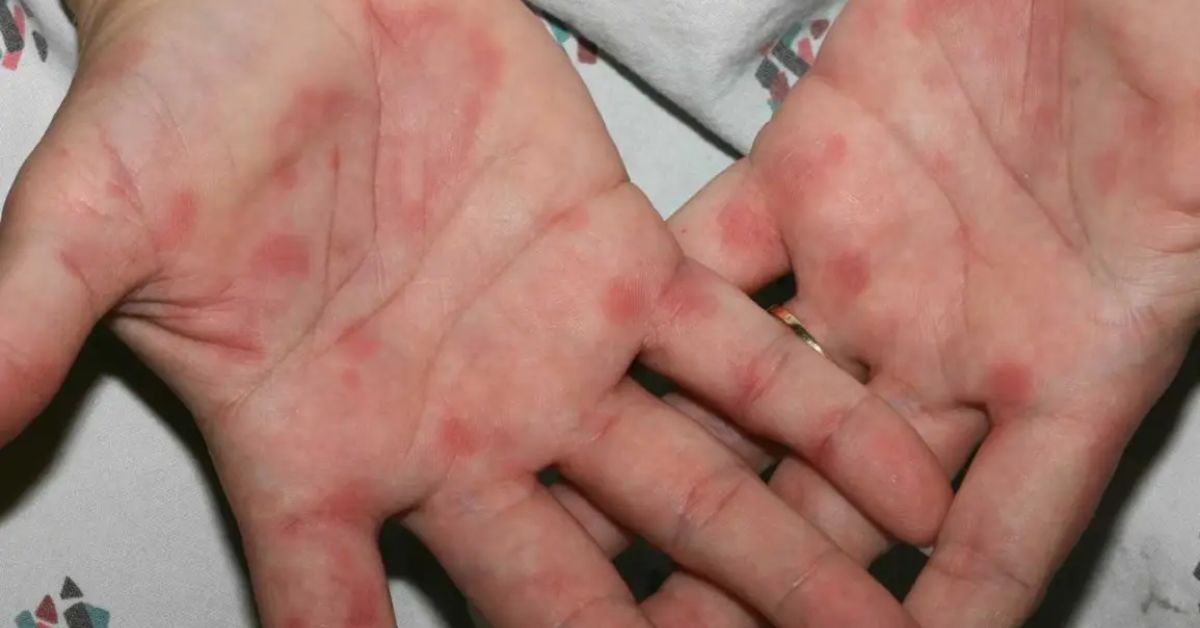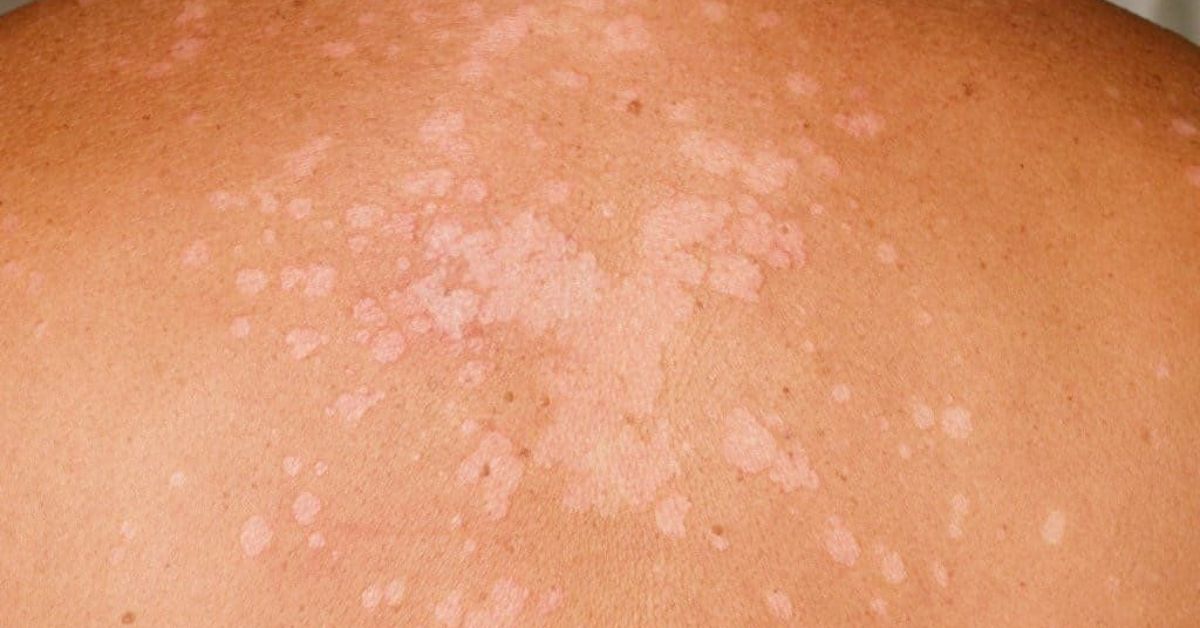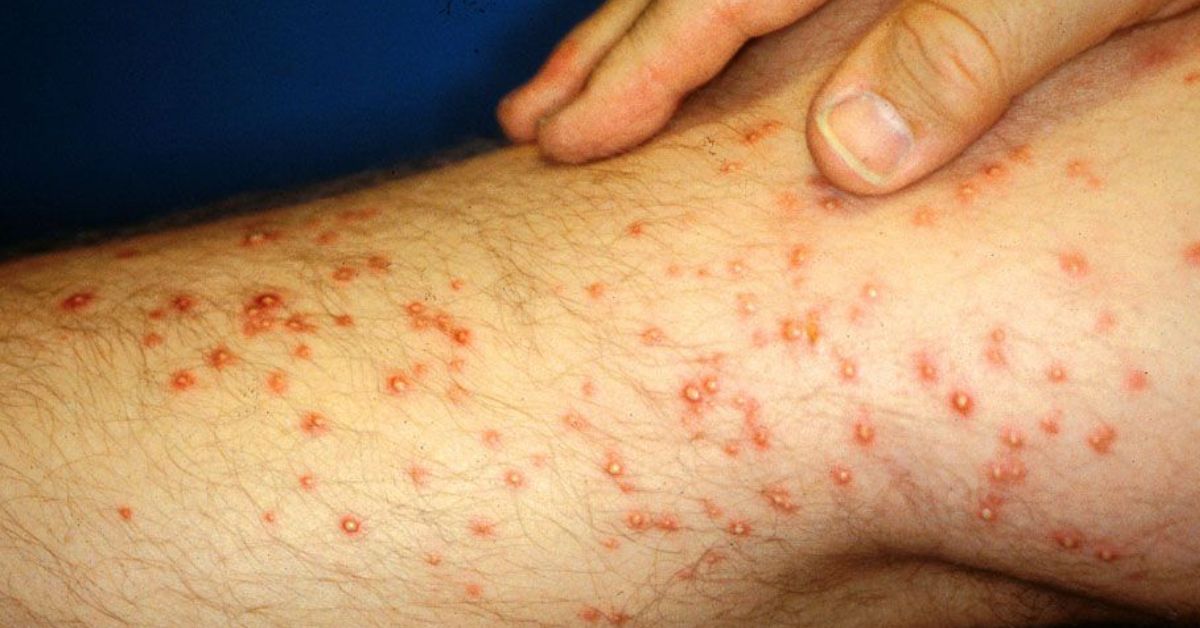Acne is a common skin concern that nearly everyone experiences at least once in their lifetime. Pimples can appear at any age, from adolescence to adulthood, and even in middle age. Follow this article to distinguish the different facial acne types and learn about suitable treatments for each case, shared by a team of skincare experts.
What is Acne?
Acne is a skin condition that affects the oil glands on the surface of the skin, manifesting as the formation of abnormal masses due to changes in sweat and sebaceous glands. However, not everyone has accurate knowledge of acne and the ability to differentiate between its various types. Let’s explore this issue in more detail with insights from skincare consultants.
When excess oil blocks the pores, creating conditions for bacterial growth and inflammation, pus-filled pimples can form, and in severe cases, cystic acne may also appear. Acne primarily occurs on the face, chin, neck, back, shoulders, and chest, posing a particularly uncomfortable aesthetic issue for women. Although acne doesn’t significantly impact health, it often leaves behind scars, blemishes, especially indentations.
Identifying each type of acne is crucial for applying appropriate treatment and skincare to achieve the best results.
Common Non-Inflammatory Acne Types
1. Whiteheads – facial acne types
Whiteheads, also known as closed comedones, usually appear as small white spots on or beneath the skin’s surface. These are generally small, measuring only about 1-2 mm, and are painless.
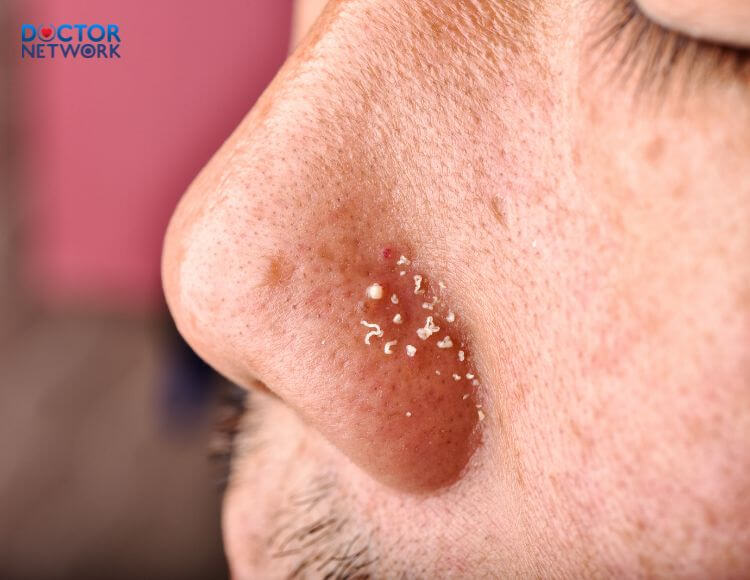
Whiteheads are the accumulation of dead skin cells, sebum, and debris
The common cause of whiteheads is the accumulation of dead skin cells, sebum, and dirt, leading to blockages in the pores. They often appear on areas such as the nose, forehead, chin, and cheeks. Anyone can develop whiteheads, especially those going through puberty, pregnancy, experiencing stress, lack of sleep, and other factors that may affect skin conditions.
2. Blackheads – facial acne types
Blackheads are one of the most common and usually non-inflammatory types of acne. They are caused by an excessive buildup of oil and dead skin cells within the pores. As the pimple emerges on the skin surface, it comes into contact with the air and oxidizes, resulting in a black color.
Similar to whiteheads, blackheads are often small, around 1-2 mm in size, and commonly appear on areas with abundant oil glands, such as the nose, forehead, chin, and cheeks. They can even be present on the shoulders and back. Blackheads are easily recognizable and are considered a common beauty concern.
3. Blind Pimples – facial acne types
Blind pimples are deep-seated beneath the skin’s surface. Although not clearly visible, the affected skin area may become rough, uneven, and cause discomfort.
Blind pimples often appear on the forehead, chin, jawline, cheeks, and around the mouth. Various factors, including hormonal imbalances, improper diet and lifestyle, poor detoxification ability, or naturally large pores, can contribute to the development of blind pimples. Proper skincare and maintaining a healthy lifestyle can help control these conditions.
4. Milia – Various Types of Facial Acne
Milia has some distinguishing characteristics: it is painless, does not contain pus, often has a slightly cloudy appearance, may appear black in some cases, and can sometimes be white. Milia is commonly found on the skin of anyone, with higher prevalence during puberty, pregnancy, or premenopausal periods in women.
Milia is often considered a precursor to many other types of acne. If damaged or infected, milia can lead to the formation of other acne types, such as comedones, inflamed acne, swelling, and pus, becoming more severe. Proper skincare and maintaining overall health are essential to preventing the development of milia and other skin issues.
Distinguishing Inflammatory Acne Types
1. Cystic Acne – facial acne types
Cystic acne is often larger than other types, with a white, yellow, or even bloody pus-filled head. Cystic acne causes inflammation and red swelling, typically accompanied by a painful sensation.
Facial acne in the form of cysts can lead to various complications, with the most common being dark spots, pitted scars, and raised scars on the skin. This can adversely affect both the aesthetics and health of the skin. The causes of cystic acne often involve clogged pores, prolonged stress, hormonal imbalances, or malfunctioning sebum production. These factors can contribute to creating favorable conditions for the formation and development of cystic acne on the skin.
2. Pustules – facial acne types
Pustules are a type of inflammatory acne that causes infected, swollen, and often painful red bumps. These swollen red bumps contain pus, causing discomfort, redness, swelling, and pain. The content of the pimple can vary, appearing either firm or soft depending on the specific conditions of the pimple.
Pustules can lead to complications such as scarring, and their severity can vary. The reasons for the development of pustules are often related to blocked pores, prolonged inflammation, hormonal changes, or the use of low-quality cosmetics. Timely and appropriate treatment, along with proper skincare, can help reduce the risk of pustules and related skin issues.
3. Nodules – facial acne types
Nodules are a severe form of cystic acne, appearing as large, swollen, painful bumps on the skin surface. These nodules often contain pus and can lead to infection in the surrounding skin areas, resulting in the formation of additional pimples. Even after nodules heal, they can leave lasting damage to the skin.
This type of acne is commonly found on the face, back, chest, or neck. The formation of nodules is often associated with clogged pores, hormonal changes, the use of poor-quality cosmetics containing corticosteroids, and other factors. Seeking advice from professional dermatologists is crucial for the treatment of nodules and prevention of recurrence.
4. Inflammatory Papules – facial acne types
Inflammatory papules are a common type of acne caused by the bacteria P. acnes within the hair follicles. These red and swollen bumps on the skin’s surface often contain pus, causing discomfort, redness, swelling, and a painful sensation. The size and hardness of the papules may vary depending on the specific conditions of the acne.
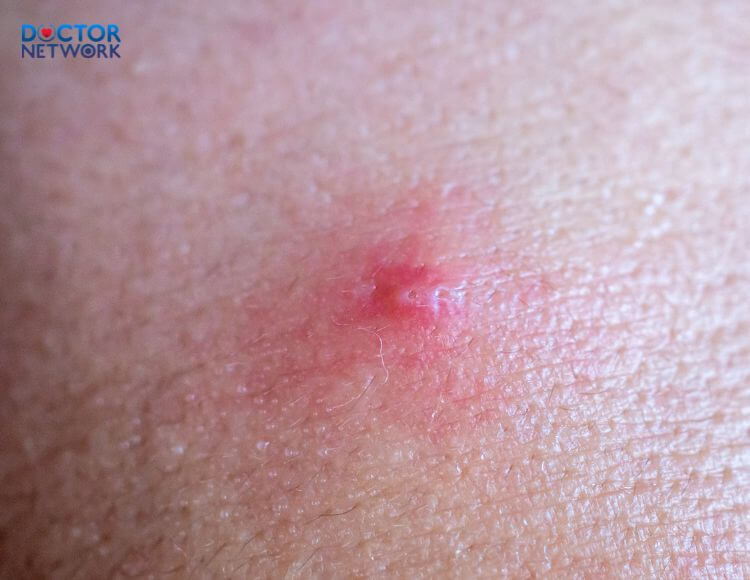
Inflammatory red pimples are a common type of acne, typically caused by the P. acnes bacteria within the hair follicles
Inflammatory papules are a widespread form of acne, often triggered by an imbalanced diet, lack of fiber and water, insufficient sleep, or stress. Genetic factors, hormonal changes, or the misuse of cosmetics can also worsen inflammatory papules. Maintaining a healthy lifestyle, proper skincare, and stress reduction can help control inflammatory papules.
Treatment and Prevention of Various Facial Acne Types
Understanding the types of acne, their causes, and treatment methods is crucial for maintaining healthy and attractive skin. At-home treatments and a healthy lifestyle can play a significant role in controlling acne conditions. Here are some specific conditions and skincare methods:
Build a Scientific Lifestyle:
- Ensure adequate and consistent sleep.
- Limit stress and practice stress-reducing methods such as meditation and yoga.
- Maintain a balanced diet, limiting foods that may stimulate acne.
Proper Skincare:
- Use a pH-appropriate facial cleanser.
- Apply daily sunscreen to protect the skin from UV radiation.
- Regularly cleanse to remove excess oil and dead skin cells.
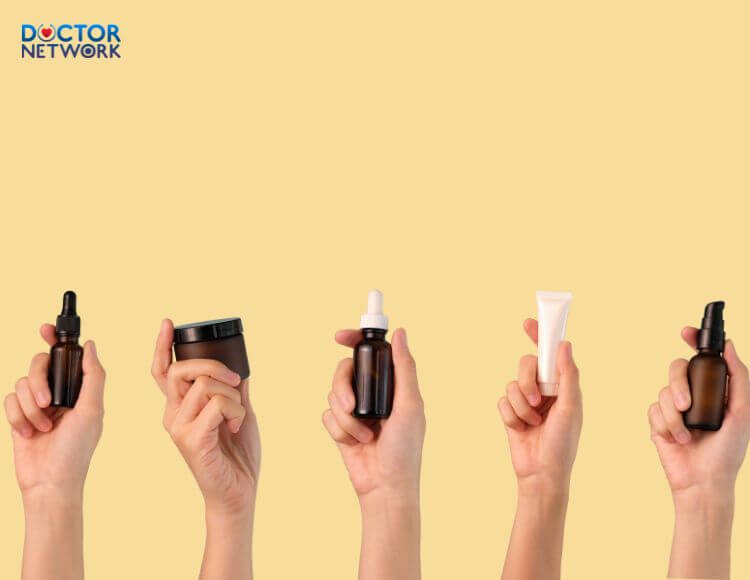
Nourishing the skin in a daily routine contributes to healthier and stronger skin
Healthy Eating:
- Limit foods that may stimulate oil production, such as spicy foods, and reduce the intake of sugary and fatty foods.
- Supplement with fruits, vegetables, and foods rich in vitamins A, E, and C.
Utilize Advanced Technology in Acne Treatment:
- Therapies such as laser, RF technology, or light therapy can help control oil and reduce inflammation.
- Before using any method, it is essential to consult with a dermatologist or skincare expert to ensure safety and effectiveness.
Note that skincare and acne treatment depend on the specific characteristics of each person’s skin, so seeking the advice of experts is crucial for a tailored treatment plan. The article has provided information on “facial acne types” and related knowledge, aiming to be helpful for readers.
Kiểm Duyệt Nội Dung
More than 10 years of marketing communications experience in the medical and health field.
Successfully deployed marketing communication activities, content development and social networking channels for hospital partners, clinics, doctors and medical professionals across the country.
More than 6 years of experience in organizing and producing leading prestigious medical programs in Vietnam, in collaboration with Ho Chi Minh City Television (HTV). Typical programs include Nhật Ký Blouse Trắng, Bác Sĩ Nói Gì, Alo Bác Sĩ Nghe, Nhật Ký Hạnh Phúc, Vui Khỏe Cùng Con, Bác Sỹ Mẹ, v.v.
Comprehensive cooperation with hundreds of hospitals and clinics, thousands of doctors and medical experts to join hands in building a medical content and service platform on the Doctor Network application.
















